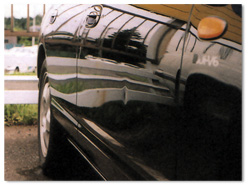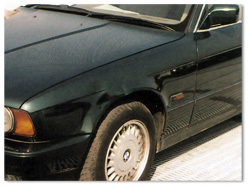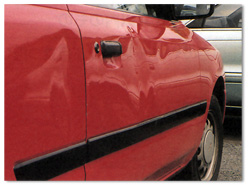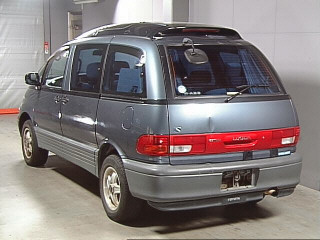Examples of damage, defects and attention marks in the auction sheet.
Dents.
U1.

U2.

U3.


Scratches.
A1.

A2.

A3.

Dents (indulations) with scratches.
B1 (USS U1+A1)

B2 (USS U2+A2)

B3 (USS U3+A3)

Wave (undulations) due to repair (recovery) (Wave).
W1. There is a wave in a panel where it has been repaired, but is difficult to see without looking carefully.
W2. There is a wave in a panel where it has been repaired, this one is still light ,but more visible than W1.
W3. There is a wave in a panel where it has been repaired, and is visible.
This picture is an example of the spot with the wave W3.

(Panel colours).
P. P labeling at the auction sheet means that a part is unlike in color with the rest of the vehicle, it usually happens when the (e.g.) plastic bumper is painted the same color as the rest of the vehicle body. This does not happen if the car is painted in metallic colors.
Example 1

Example 2

Cracks.
Cracks are usually occur at plastic bumpers, side skirts, spoilers, wheel covers, alloy wheels. They have no special designation and indicated in Japanese. Please contact us and we tell you whether they are marked on the auction sheet.


Rust. No examples, because the measure is very relative and subjective.
S1. There is some minor rust, not more than your palm.
S2. S2. There is some minor rust, slightly more than the S1.
S3. There are some rusty areas requiring repair.
Element is replaced or requires replacement. (for example: the hood, fender, door, etc.)
XX. This means that this element has been replaced.
X. This indicates that this element requires replacement.
Warning! These examples relate to the standard auctions USS. Toyota, Aucnet, and Honda can assess the damage a little differently. |